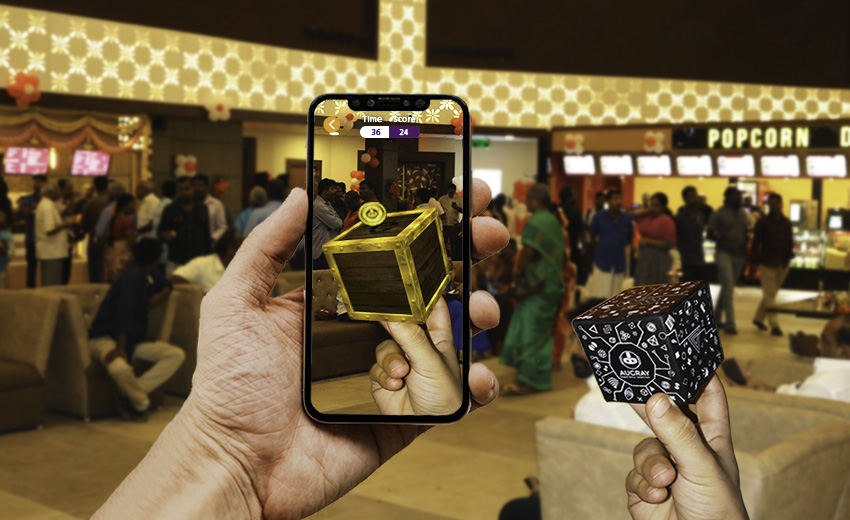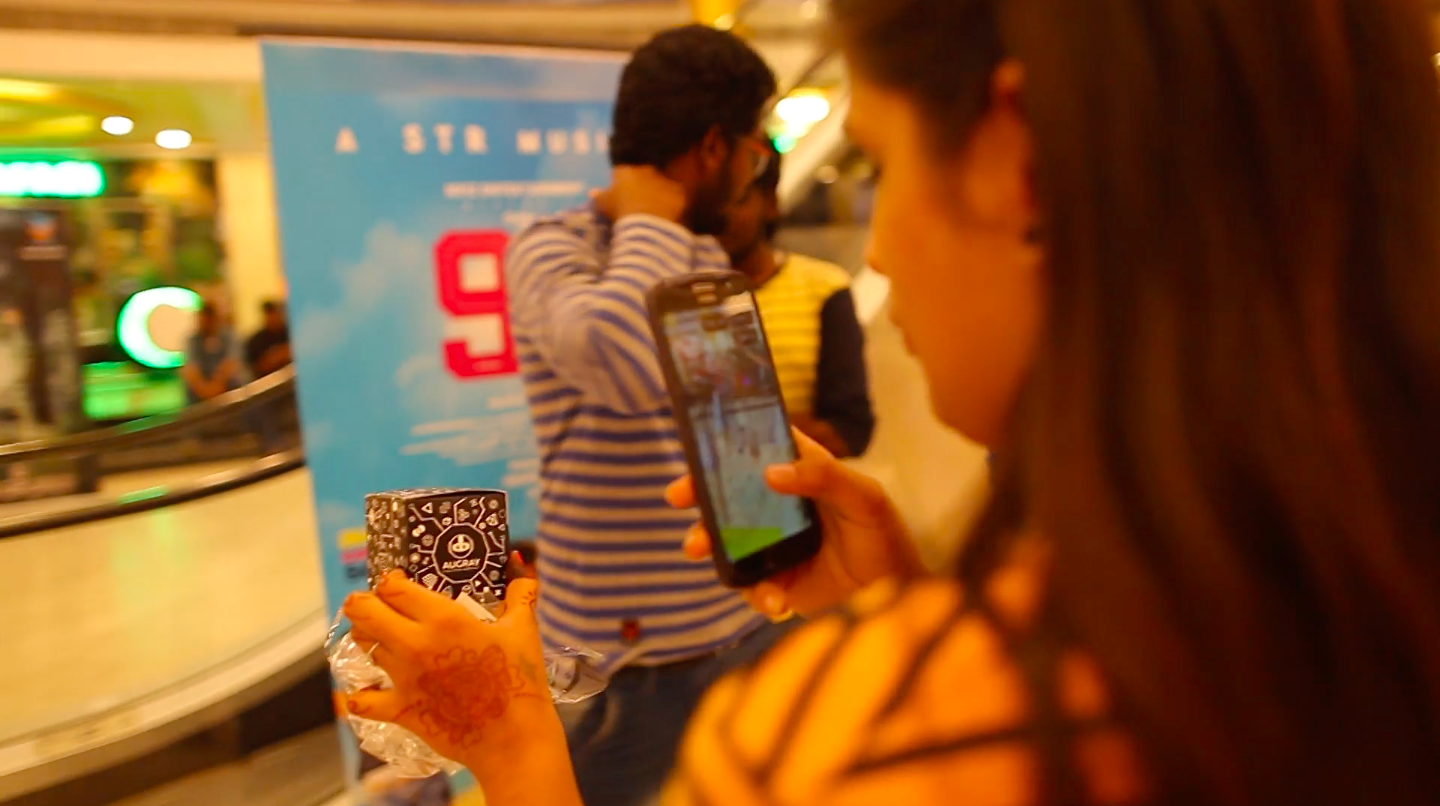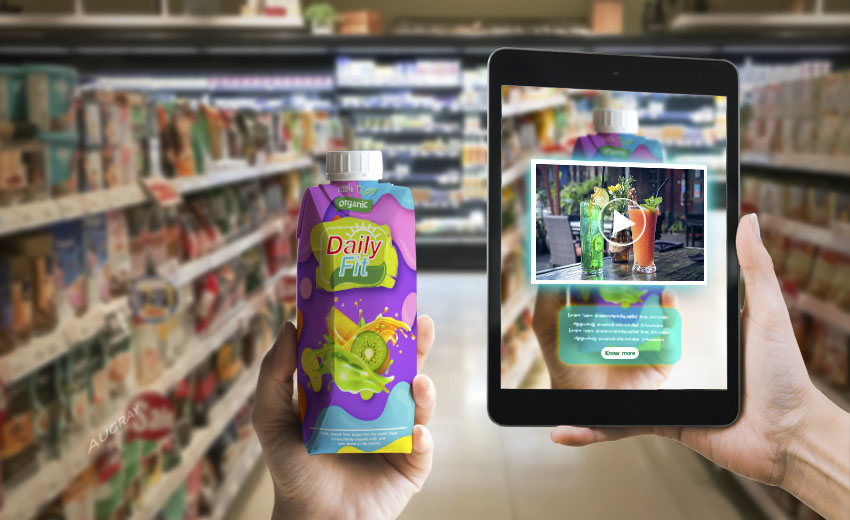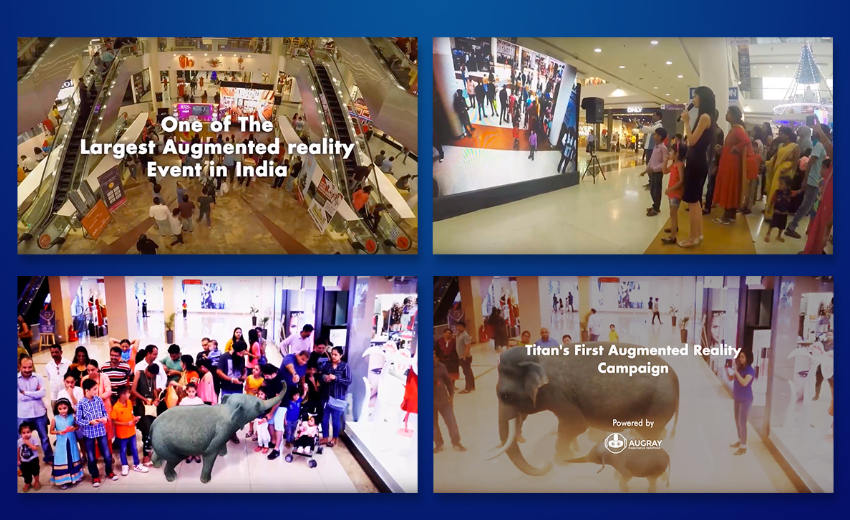AR Cube brings augmented reality at your fingertips offering exciting possibilities for future technology involving AR which can be actually felt and manipulated.
Today is an era of augmented reality (AR), and the AR software defined in simple words is a digital overlay placed on real-world objects. Is there anything that makes the AR Cube different? It is the augmented reality technology that brings AR cube at your fingertips.
So, what is an AR Cube? It is a small, device that is used as a template for AR effects which can be seen over-layered onto the cube itself.
Roughly the size of a Rubik’s Cube, the AR Cube offers breath-taking augmented reality graphics in a bite-sized package. Users of the AR cube can deploy the cube to explore the solar system or travel inside an ancient castle.
In the current scenario, it can be a bit awkward to hold the AR Cube in one hand with your smartphone in the other, but when the AR glasses become mainstream, this problem will be solved. Users also report that playing with the cube itself is intuitive, requiring very little app-specific knowledge.
The potential of the AR Cube and the types if the AR Cube available
With many AR cubes in the market today there is a race about which one wins the race for the best cube. There is Huawei’s AI cube which fails to resemble the titular polyhedron and the Merge Cube which looks like a sci-fi prop and feels like a baby’s building block but boasts of many multiverses of hidden depths hinting at the exciting potential of AR that the users can touch.
Users can simply point their phone at the cube to fire up a compatible app, transforming the Merge Cube. The merge cube allows them to hold planets in their hands, creatures, body parts, or even experience a complex environment such as a castle with waterways, ramparts, and bridges.
Experience discovery and fun in the palm of your hands
AR Cube is more than a pick-up-and-play which is instinctive and satisfying, so it’s no surprise that AR cube is targeting children and educators with attractive and informative content. For example, the AR cube can transform itself into a miniature solar system with handy information points you can discover as you rotate, angle, and zoom around the hologram in your hands.
The delight of holding these magical images is not limited to children alone. After trying complex apps, the AR cube has got even the older millennial to become quickly hooked.
Tilt ball has caught the older generation with awe. This is a simple physics game where the users have to roll a ball around a 3D environment without dropping it into the
‘water’. The manual dexterity and quick reaction have impressed users with how responsive and detailed the AR tech can be. Users have discovered Minecraft-style constructions, global weather tracking, virtual pets, strategy games and more.

The scope of the human touch in the world of AR
The scope of the human touch with the AR cube brings AR images closer to your hand if you’re used to interacting with virtual objects with controllers, as in the case of the high-end VR gaming.
AR cube already has another product like the 6DoF Blaster which is a weapon designed for immersive AR and VR shooting and action games. Weapons aside, physical AR tools have an immense potential to be deployed to move virtual objects around a table-top for gaming or exhibition purposes, create detailed 3D scale models of anything or virtually design handheld products with a simulation of how they will look in the real world
Pitfalls and Concerns
It has been for some time that the AR Cube is sitting around the Digital Bodies workspace. It seemed like a great idea but the available experiences are limited often requiring some additional fees.
Worse, if the users have to search for the content as separate items in the App Store, they won’t find much use for the AR cube without making additional purchases.
Privacy
With technology becoming the mainstream today, important discussions about ownership and data are already rife in the tech industry. Privacy matters will be particularly important if the world is going to witness more and more always-on tech strapped to our faces soon, which will bring AR tech environments closer from the operating room to your office to even your bedroom. But for that to work, there is an urgent need to be more transparent, doing away lots of regulation and bringing focus on quality content rather than making a quick buck.
Growing AR and the Future
AR is the technology in vogue which is expected to generate nearly $120 billion in revenues by 2020, multiplying its current revenue by six-fold. Therefore, it should not come as a surprise that AR with the AR cube is the technology of the future, making our realities a little more augmented, but a lot more dynamic.
AR is not just about allowing you to view the world, but giving you a wider avenue to interact with what you see and touch. That is all that the Cube is about. While the AR Cube needs more app support, it is at its current phase both cheap and a good deal of fun – especially if you want to embrace the augmented life.










